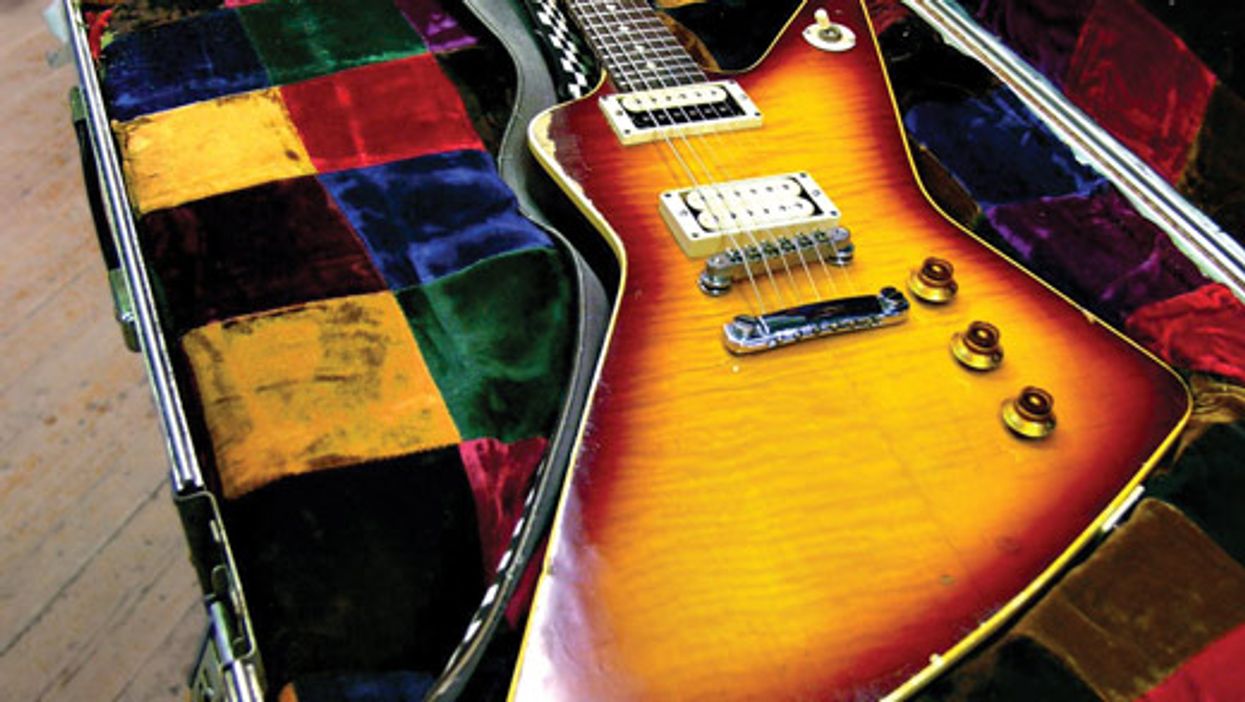Let's get this straight: I'm a rip-off artist and so are you. Guitar players and guitar makers are sponges in the diverse waters of our culture. John Lennon is commonly attributed with saying “amateurs borrow, professionals steal," and who can doubt that he took this seriously? In fact, as a reader of poetry, I know there is little doubt that he was paraphrasing T.S. Eliot—therefore demonstrating his point in a most ironic way.
No artistic or commercial undertaking exists in a vacuum. Modern guitar players and builders alike owe their styles to those who have come before or those who exist as peers. Bob Dylan and the members of the Band would certainly recognize the facial hair and fedoras of the current Americana scene, and an entire generation of songwriters is using Neil Young's Harvest as a stylistic template. A side note: The banjo business is thriving.
Similarly, I have noted previously that after pillaging the Strat/Tele form, many builders have moved on (as did Fender) to the so-called “offset" styles. At least it's a chronologically logical shift. It's also interesting to observe that even Gibson's second stab at staying hip involved copping Fender's offset vibe when Gibson launched the Firebird series in 1963. It was basically a Jazzmaster turned upside-down, complete with a backwards Fender-like headstock. Rad. In a seemingly reverse (bad pun intended) strategy beginning in 1965, the Firebirds that came later were even closer to Jaguar/Jazzmaster territory.
My guitar-making trajectory began with the emulation of failed designs from the '50s (the V and the Explorer). At the time, there had been but a couple of dozen Explorers made by Gibson between 1958 and 1959, and most guitarists had no idea they even existed. I thought the shape of the original korina version was cool, but wanted to make one with a few changes. So in 1973 my business partner and I purchased a raw-mahogany replica made by my friend Jim Beach of Wooden Music. Jim was a colleague in the vintage-guitar trade and a skilled builder who was already making Explorer- and Flying V-style guitars along with his own designs.
In the spirit of the great poets, we decided to embellish and improve upon the original Explorer by adding a figured-maple top, binding, and a sunburst finish. The curved tips of the “wings" were fair game and our interpretation rounded them off more gently than the original. Looking back, it's clear to see that all of us were indeed expropriating an abandoned design that its creator, Gibson president Ted McCarty, had declared a “failure." We had no plans to start a guitar company. It was merely a fun project. This, to me, is the essence of the poetic license: to take a form and paraphrase it artfully in a way more meaningful for the times.
In T.S. Eliot's The Sacred Wood, which includes his essay on Philip Massinger from which the Lennon quote sprang, the author says, “Immature poets imitate; mature poets steal; bad poets deface what they take, and good poets make it into something better, or at least something different." Perhaps even more important, Eliot continues, “The good poet welds his theft into a whole of feeling which is unique, utterly different from that from which it was torn; the bad poet throws it into something which has no cohesion."
One of the great things about having been around music, guitars, and the musical-instrument industry for as long as I have is that you see trends come and go. Then you get to see them come back again. And so just as we hear the Viscount's 1960 version of “Harlem Nocturne" on roots radio (presumably because it features tremolo guitar) queued up next to Jim Lauderdale and Johnny Cash, we get Firebird and Teisco clones with humbuckers, Bigsby vibrolas, and built-in fuzztones.
I see a lot of mix-and-match styling exercises with no regard for poetic cohesion, but also some truly inspired new-design exercises. Sometimes the reinterpretations are blatant and immature, and sometimes they are more nuanced. Today there's something for everyone, which is cause for celebration. It is an exciting and diverse time in the guitar industry, with so many options that you could never experience it all. The truth of it is that we all borrow from everything around us and the information from the past is just a click away. The craft is to wring out our influences in ways that make sense as well as a statement. So, let's remember Eliot's advice and make something different, and better.




















